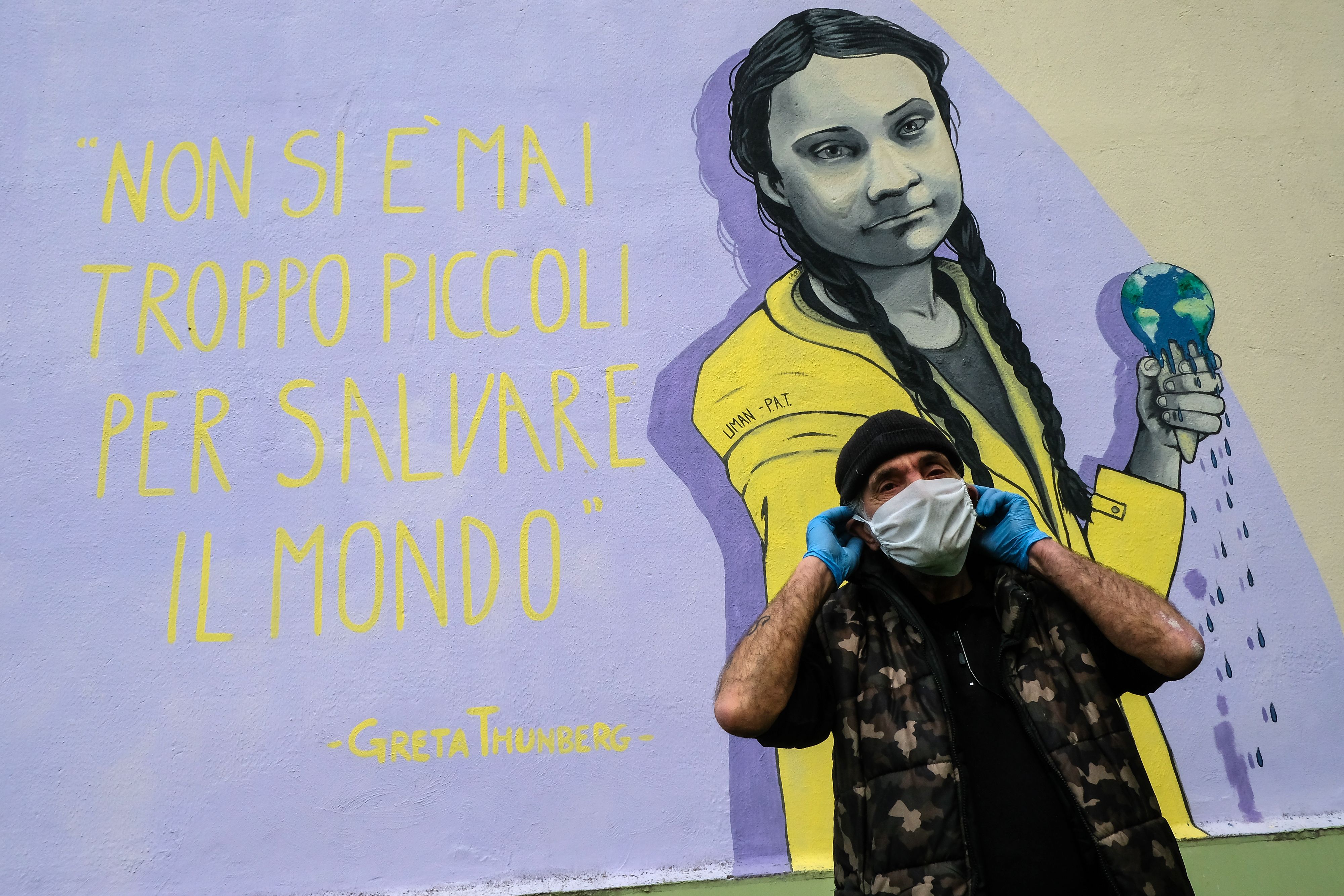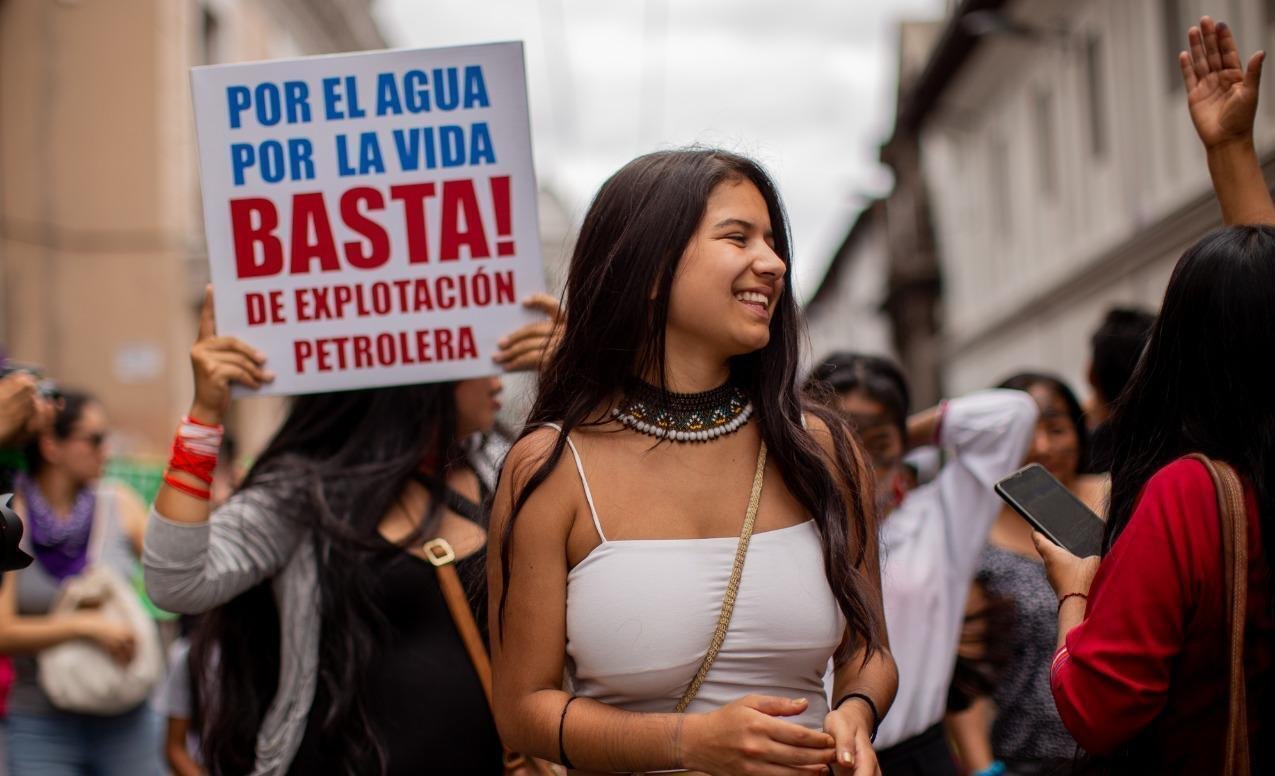Fascists Impersonate Climate Group to Say Coronavirus is Good for Earth
The white supremacist group Hundred-Handers appears to be impersonating Extinction Rebellion.
By Ben Makuch 26 March 2020

A Twitter account claiming to be the regional arm of climate change activist group Extinction Rebellion (XR) tweeted photos of an apparent postering campaign promoting the coronavirus as a natural "cure" to the human "disease", causing a swift backlash online.
The problem: The group says it does not recognize the Twitter account and tweeted "far-right groups have put out stickers with messaging" that is not in line with the group's beliefs. In an email, Extinction Rebellion spokespeople clarified that they don't actually know who is behind the account, but social media posts by a neo-Nazi group viewed by Motherboard shows them gloating about flyers and claiming that the group impersonated Extinction Rebellion in the past.
“Earth is healing. The air and water is clearing,” reads the post by an account going by @xr_east and claiming to be the East Midlands chapter of XR, which rose to prominence last year when the group organized mass climate change protests that brought London to a standstill. “Corona is the cure. Humans are the disease!”
“The Twitter account in question is not recognised by Extinction Rebellion East Midlands or Extinction Rebellion UK and we do not support in any way the positions expressed on that account," spokespeople said in an email. "In terms of the Twitter account, we aren’t aware who is behind it. XR is a decentralised, autonomous movement, with hundreds of groups worldwide. At first glance it looks legitimate – it uses XR branding, and has retweeted a number of XR tweets. But, we have spoken with our regional coordinators and they [knew] nothing about it before today."
Motherboard is aware of an anonymous white supremacist group called the Hundred-Handers, which was recently active in the UK and has already bragged online in the past of impersonating XR posters.
“Be a real shame if our latest archive contained elements and fonts required to create extinction rebellion stickers,” says a January Telegram post from the group viewed over 8,000 times, accompanying a photo with a series of anti-immigrant and racist stickers bearing the XR logo that resemble those tweeted by the @xr_east account.
On the same day the Hundred-Handers channel then posted: “Send us your best XR edits and we'll post them and include them in our archive."
The anonymous Hundred-Handers group, which is known for its stickering campaigns around the UK and the US, takes its name from a many-headed monster in Greek mythology with a hundred hands. Members are required to download racist sticker templates promoting white supremacism and nativist ideologies prevalent among the far-right.
Though Motherboard can’t confirm that the latest posters in the East Midlands were the work of the Hundred-Handers, another recent post by the group points to more impersonations of XR.
On March 7, a photo posted in its Telegram channel shows a sticker posted in what appears to be the London Tube bearing the the XR symbol with the slogan: “White Brits a minority by 2066, preserve an endangered species.”
Some of the propaganda Hundred-Handers espouses centres on the absurd ecofascist principle that overpopulation in countries outside of Europe and North America has caused the brunt of the climate crisis.
Fascists co-opting the novel coronavirus pandemic to their advantage isn’t new. Last week, Motherboard revealed how neo-Nazi accelerationists see the global crisis as an opportunity to hasten the collapse of society, plotting to use the climate of fear surrounding the pandemic to carry out terrorist attacks.
Extinction Rebellion itself is controversial among environmentalists, activists, and leftists, with critics saying that it naturally lends itself to ecofascist ideologies; in the past, ecofascists have used the organization's name to spread their racist views. The group is also overwhelmingly white, with activists of color saying that one of its core mechanisms of action – asking people to get arrested during environmental protests – is inherently unsafe for people of color, who disproportionately have violence perpetrated against them by the police.
This article originally appeared on VICE US.
Experts Say Neo-Nazi 'Accelerationists' Discuss Taking Advantage of Coronavirus Crisis
"While this is online chatter, the fact that it’s seeking to take advantage of and exacerbate a crisis is alarming."By Ben Makuch Mar 18 2020

AN IMAGE FROM A MILITANT NEO-NAZI TELEGRAM CHANNEL.
While ISIS has instructed its members to steer clear of Europe and to constantly wash their hands in hopes of avoiding contracting the novel coronavirus, far-right extremists are discussing how this could be their moment to capitalize on what they see as a potential collapse of society.
The conversations, many of which are taking place on encrypted and closed Telegram channels, gives a glimpse into how the militant neo-Nazi movement—the organized sections of which have been facing increased pressure from federal law enforcement—is reacting to the global pandemic.
Though a lot of the talk is wrapped in troll culture with users sharing absurd anti-semitic theories for the virus’ origins and memes about the supposed hygienic superiority of Nazis, some online neo-Nazis are openly seeing the potential opportunity the pandemic brings to their movement: the chance for violent insurgency if authorities struggle to maintain control over society during a prolonged lockdown of the public.
“I hope it’s almost time boys,” reads one Telegram post on a known neo-Nazi account viewed hundreds of times and featuring the selfie of a man clad in military attire, combat vest and a skull mask.
Another post from an infamous channel linked to neo-Nazis fighting in eastern Ukraine shows a man with a hazmat suit, gas mask, and carrying a Kalashnikov assault rifle with the words (in Ukrainian), “ready for virus and parasite control” while standing with a portrait of the Christchurch shooter hanging to his right.
The same account tells followers in Ukrainian to: “Buy ammo and get ready to rob banks. All is well.”
That neo-Nazis are at least discussing they want to be violent during times of pandemic isn’t altogether surprising nor is it evidence that actual physical violence is likely—online chatter is often purely hypothetical, though disturbing nonetheless.
In recent years, adherents of ultra violent brands of white supremacism have preached ‘accelerationism,’ which holds that western governments are currently teetering on disintegration and vulnerable to operations sowing chaos and creating societal pandemonium. Neo-Nazi movements have always tried to take advantage of times of great uncertainty, and some members of far-right extremist networks see the pressure of coronavirus as a possible trigger for the “boogaloo”; a hypothetical second civil war.
“Extreme right-wing accelerationist and neo-Nazi Telegram chats and channels have increased their frequency of calling for violence related to the coronavirus since the president’s declaration of a national emergency on March 13,” said Joshua Fisher-Birch, a research analyst at the Counter Extremism Project, a U.S.-based terrorism watchdog. “The violent rhetoric also increased on March 16 as economic damage from the coronavirus has increased.”
In a post captioned “ACCELERATION REMINDER,” one well known neo-Nazi channel that provides tradecraft to evade authorities online warns followers to beware of the possible presence of National Guard units across the country if the pandemic worsens and the Trump Administration deploys troops inside the U.S.
Some posts are less violent, but recommend things like aimlessly firing off their guns in city centers, without a target, to promote panic among the public.
The many far-right extremists populating these Telegram channels are taking advantage of the moment to ramp up their rhetoric, but as Fisher-Birch cautions that, so far, is only online chatter.
“As more Americans have been reported as infected in the past few days and stock exchanges have fallen, the administrators of these chats and channels seem to have realized that this is a moment to increase their calls for disorder and advocacy for violence, whether it is against the government, against people of color, or against Jews and Muslims,” said Fisher-Birch. “While this is online chatter, the fact that it’s seeking to take advantage of and exacerbate a crisis is alarming.”
Of late, accelerationism has become more organized. For example, members of The Base and Atowmaffen Division, two neo-Nazi terror groups under a recent nationwide FBI probe resulting in several arrests of members who plotted assassinations and mass shootings, are major proponents of accelerationism.
Both groups undertook several paramilitary training camps with dozens of members in the U.S. and preached the values of survivalism in preparation for when, “shit hits the fan”—or a time of complete social decay—and plotted ways to hasten it.
SEE https://plawiuk.blogspot.com/search?q=ECOFASCISM


























